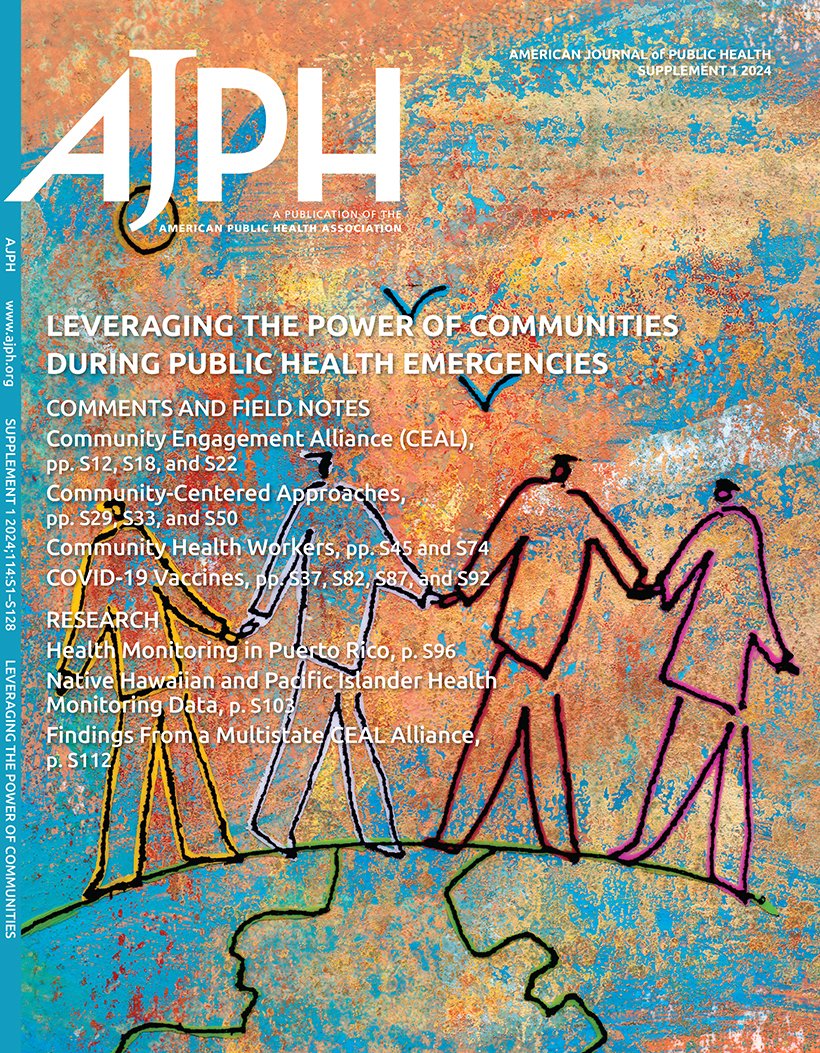加州矽肺监测,2019-2024:追踪流行病。
IF 9.6
1区 医学
Q1 PUBLIC, ENVIRONMENTAL & OCCUPATIONAL HEALTH
引用次数: 0
摘要
目标。描述加州工人矽肺病的性质、负担和趋势,包括接触工程石材的工人。方法。我们进行了多来源的公共卫生监测并生成描述性统计数据,将工程石病例与其他二氧化硅暴露病例进行了比较,并检查了各种数据源对矽肺监测的效用。结果。从2019年到2024年,我们收到了648人的1817份可能的矽肺报告,确认了296例(46%)病例,其中243例(82%)与工程石暴露有关。与非工程石病例相比,工程石病例更可能是年轻人、男性、拉丁裔和来自洛杉矶县。在工程性结石病例中,已知至少15例(6%)死亡,60例(25%)转介肺移植,其中30例(12%)接受了肺移植。各报告机制之间的重叠部分有限。结论。多源监测对于识别大量矽肺病患者是有效的,包括暴露于工程石的人。结果很严重,许多患者病情发展到晚期。结果表明,工人筛选和减少二氧化硅暴露对于防止工程石材台面制造行业的发病率和死亡率至关重要。公共卫生。2025年9月4日提前在线发布:e1-e9。https://doi.org/10.2105/AJPH.2025.308225)。本文章由计算机程序翻译,如有差异,请以英文原文为准。
Silicosis Surveillance in California, 2019-2024: Tracking an Epidemic.
Objectives. To characterize the nature, burden, and trends of silicosis among California workers, including workers with engineered stone exposures. Methods. We conducted multisource public health surveillance and generated descriptive statistics, compared engineered stone cases to cases with other silica exposures, and examined the utility of various data sources for silicosis surveillance. Results. We received 1817 reports of possible silicosis for 648 individuals from 2019 to 2024 and confirmed 296 (46%) cases, including 243 (82%) associated with engineered stone exposures. Engineered stone cases were more likely to be younger, men, Latino, and from Los Angeles County than were non-engineered stone cases. Of engineered stone cases, at least 15 (6%) were known to have died, and 60 (25%) were referred for lung transplant, including 30 (12%) who received transplants. There was limited overlap between reporting mechanisms. Conclusions. Multisource surveillance was effective for identifying a large number of individuals with silicosis, including people exposed to engineered stone. Outcomes were severe, and many patients had advanced disease. Results illustrate that worker screening and silica exposure mitigation are essential to prevent morbidity and mortality in the engineered stone countertop fabrication industry. (Am J Public Health. Published online ahead of print September 4, 2025:e1-e9. https://doi.org/10.2105/AJPH.2025.308225).
求助全文
通过发布文献求助,成功后即可免费获取论文全文。
去求助
来源期刊

American journal of public health
医学-公共卫生、环境卫生与职业卫生
CiteScore
9.50
自引率
3.90%
发文量
1109
审稿时长
2-4 weeks
期刊介绍:
The American Journal of Public Health (AJPH) is dedicated to publishing original work in research, research methods, and program evaluation within the field of public health. The journal's mission is to advance public health research, policy, practice, and education.
 求助内容:
求助内容: 应助结果提醒方式:
应助结果提醒方式:


